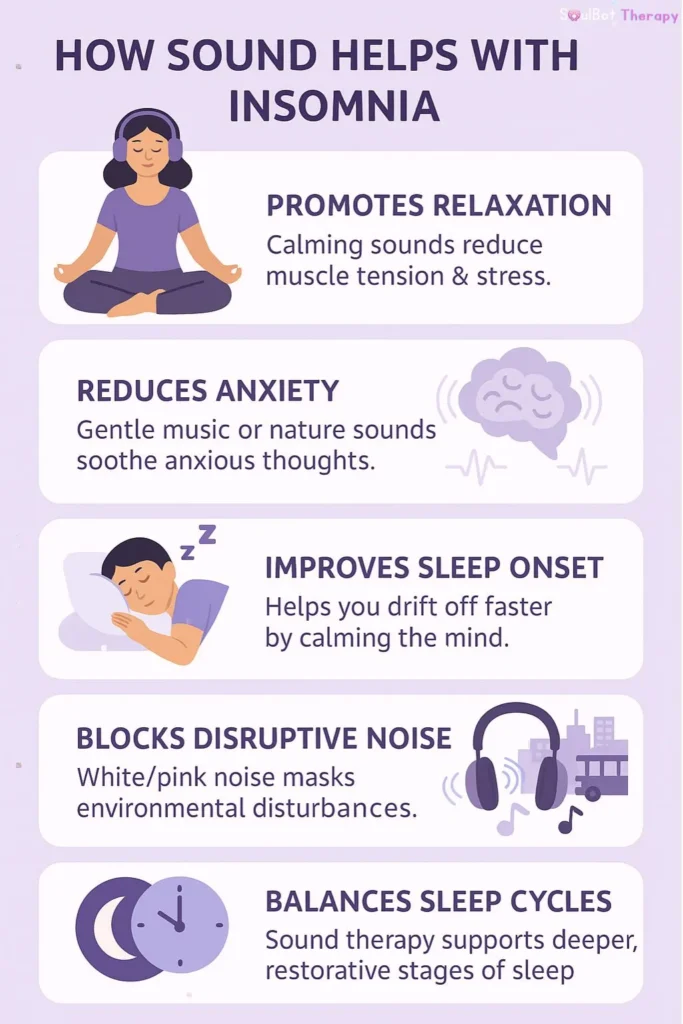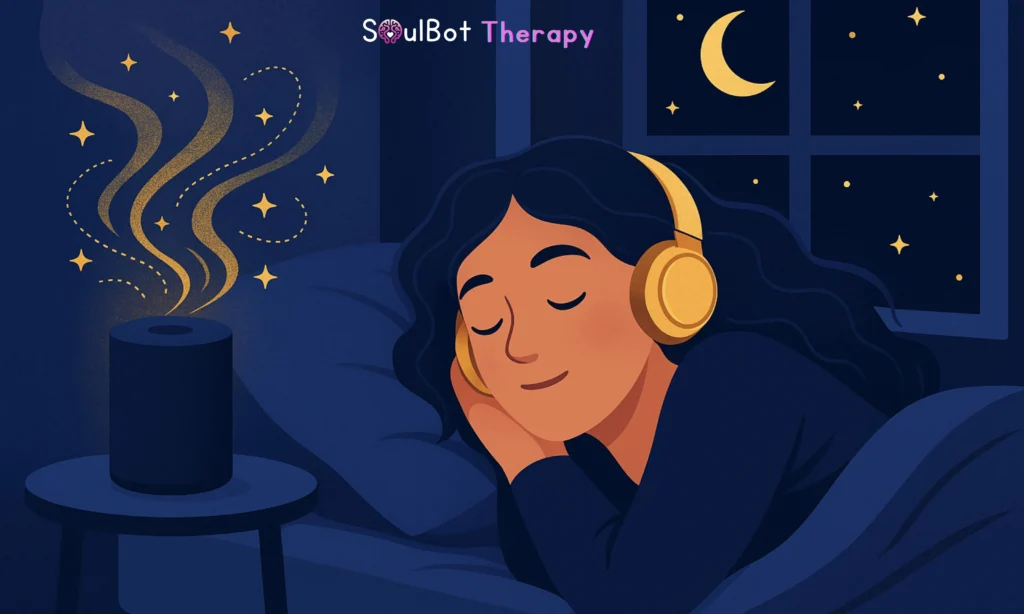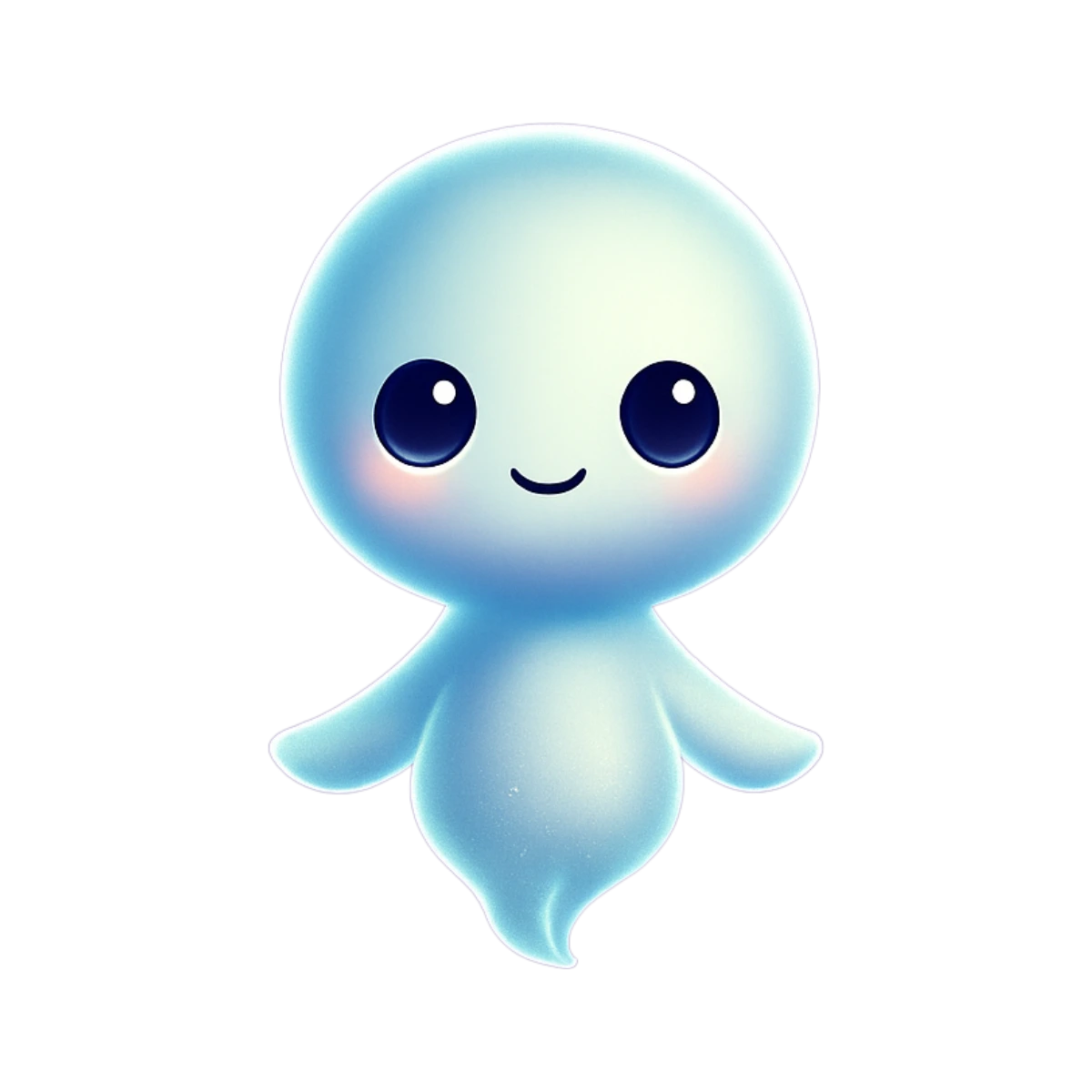Are you tired of counting sheep? Many people are shifting to alternative methods like sound healing for better sleep. From Tibetan singing bowls to binaural beats, sound therapy calms the mind and body. But does it really work, or is it hype? Let’s dive into the science, psychology, and practical uses of sound healing for sleep.
What Is Sound Healing for Sleep?
Sound healing is an ancient practice using vibrations from instruments or frequencies to encourage relaxation and balance. For sleep, it often includes:
- Singing bowls or gongs
- Binaural beats through headphones
- Sound baths for relaxation
- Gentle music or white noise
These sounds are thought to synchronize brainwaves, moving them into slower states that encourage deep rest.
How Does Sound Therapy Affect the Brain and Body?
Sound doesn’t just stay in your ears; it affects your nervous system.
- Low-frequency sounds can shift brain activity from alert beta waves to calming alpha and theta waves.
- Relaxing tones reduce cortisol (the stress hormone).
- Repetitive rhythms help regulate breathing and heart rate.
💡 SoulFact: Research shows that soothing sound therapy activates the body's relaxation response, lowering stress and preparing the brain for sleep.
Does Sound Healing for Better Sleep Really Work?
The evidence suggests yes, especially for people with insomnia or stress-related sleep issues. While sound therapy isn’t a cure-all, it creates the conditions for better rest by calming both body and mind.
Studies show that listening to slow-tempo music or specific healing frequencies for sleep before bedtime improves sleep quality and reduces nighttime awakenings.
What Are the Best Healing Frequencies for Sleep?
Sound healers often advise specific frequencies for rest:
- 432 Hz: Believed to promote harmony and relaxation.
- 528 Hz: Linked to stress reduction and emotional healing.
- Theta waves (4–8 Hz): Associated with deep relaxation and REM sleep.
While not all claims are scientifically proven, many people find these tones calming and effective.
💡 SoulFact: People who listened to calming music for 45 minutes before bed reported better sleep quality and extended rest than those who didn't.

How Do Sound Baths Help With Relaxation and Insomnia?
Sound baths use instruments like crystal bowls, gongs, and chimes to create immersive vibrations. These sessions often last 30–60 minutes and encourage deep relaxation, almost like a reset button for your nervous system.
People who struggle with music for insomnia relief often report that sound baths help them let go of stress, making it easier to fall asleep.
👉 Struggling with insomnia? Take our Sleep Quality Assessment and find what's disrupting your rest.What Does Psychology Say About Music and Sleep Quality?
Psychologists view music and sound therapy as powerful tools for emotional regulation. Calming sounds:
- Reduce overthinking before bed.
- Provide a secure distraction from stress.
- Help build consistent pre-sleep rituals that signal the brain to rest.
This ties into the broader science of mental health and sleep quality: sleep naturally follows when one’s mind is calmer.
How Can You Try Sound Healing at Home?
You don’t need a professional session to benefit. Try:
- Listening to binaural beats with headphones.
- Playing ambient or nature sounds while winding down.
- Creating a bedtime ritual with soft background music.
- Using apps that offer sound therapy and sleep programs.
Start small, experiment, and notice what resonates with your mind and body.
Conclusion: The Sound of Better Sleep
Sound healing isn’t just a wellness trend; it has psychological and physiological benefits that can improve sleep quality. Whether it’s calming music, sound baths for relaxation, or healing frequencies, sound therapy allows the brain and body to enter a state of rest. While results vary, resetting your nightly routine is a straightforward, low-risk way.
👉 Want personalized bedtime rituals? Chat with SoulBot, your AI sleep coach, for tailored, proper sound healing and relaxation tips.







